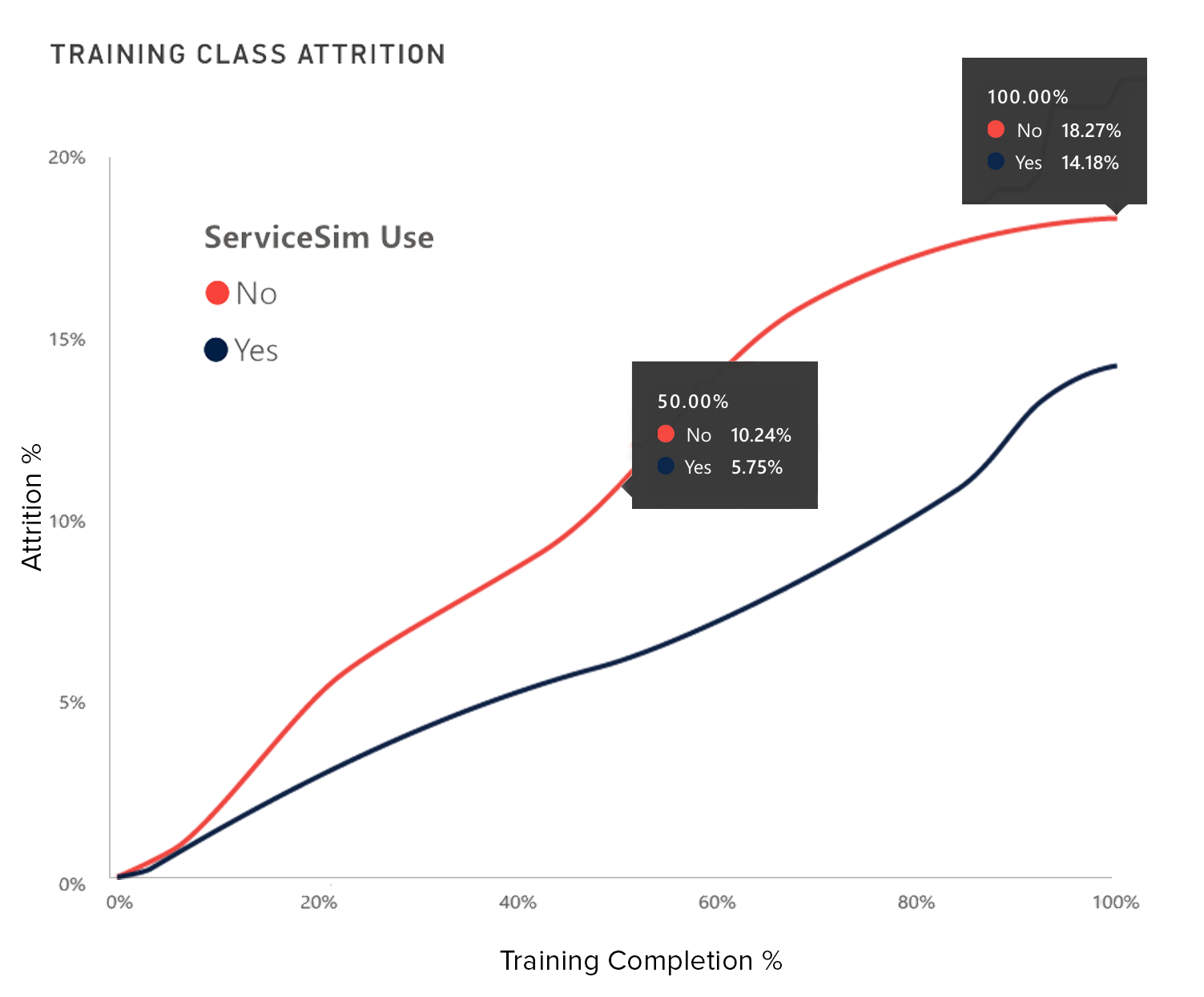When purchasing software, contact centers often overlook key factors, meaning their new software is not the all-in-one solution they were hoping for but rather a band-aid unable to fix a larger problem.
And the resulting low performance metrics, agent turnover, and lost profits only cause contact centers to search for better technology once again.
How do we break this cycle? First, let’s look at the current buying process to find out where things are going wrong.
The buying process is disconnected from business outcomes.
Desired business outcomes play an extremely important role in purchasing new software, but they aren’t always connected to the buying process clearly.
Contact center leaders know they need a solution to improve a specific business outcome like increasing revenue, for example. But they may not know how to get there.
Rather than letting multiple departments weigh in on the issue and muddle the problem, leaders need to ask two questions:
1. What results do we want to see?
2. What tools will help us get there?
Asking these questions opens the door to proper evaluation of the contact center’s needs—and to finding software that’s the right fit.
Otherwise, the contact center risks ending up right where it started, with low revenue and ineffective software.
Contact centers don’t consider the agent perspective.
When seeking new solutions, agents are the most important people to consult, as they are the ones guaranteed to use any new technology.
But their perspective is not usually integrated into the buying process. And, on top of this, the training provided to agents is typically lacking.
As a result, agents can become frustrated quickly when new technology is integrated into a call center. Discouraged agents = low performance metrics. And agent turnover often isn’t far behind.
The solution: make understanding the agent experience an essential step in the buying process. Because when agents aren’t given the right tools to succeed, the outcome is poor customer experience and lost profits.
Most software vendors don’t make the buying process any easier.
Software vendors typically operate in two ways:
- They hand off the software to the contact center, leaving them on their own to implement the new technology.
- They provide support to the contact center but hide the fact that there are additional costs involved in the buying process.
Incorporating new technology requires some work on the part of the software vendor (if they’re a good partner).
But the extra price tag on this consulting support can create trouble for a contact center, especially when the software vendor does not make their pricing clear.
So, what’s the right way to purchase new software?
We’ve already demonstrated why contact centers need to integrate business outcomes and agents’ perspectives into the buying process to see success.
Here are three more important factors to consider when purchasing contact center software that are often forgotten.
1. Understand the contact center’s requirements before looking for software.
It’s critical you identify your contact center’s software requirements internally before beginning the buying process. Software vendors can’t provide value without knowing what you need.
While determining what your contact centers’ needs are, create a spreadsheet that clearly identifies top requirements to reference throughout the buying process.
2. Understand any prospective software vendor’s business model.
Learn the way the vendor does business. Do their business practices align with the way your contact center is run?
Ask these questions to help you determine if the vendor is a good fit:
- How does the vendor make deals? What are the terms and length of their contract?
- Is the vendor completely transparent about the product and pricing?
Before jumping into any contracts, it’s essential to fully understand what the vendor is offering and if it’s truly beneficial for your contact center.
And always check the vendor’s pricing carefully to make sure there are no hidden costs. Some vendors account for consulting support costs while others don’t.
Working with a software vendor with built-in support ensures there’s no surprises for the C-suite. At Vistio, the cost of additional work is built into the pricing, so contact centers know what they’re getting.
3. Evaluate the level of involvement the prospective vendor provides.
Is the level of engagement provided by the vendor right for the software and your contact center?
Many vendors make their product available online for contact centers to download and configure themselves, while others offer consulting support. And consulting support can vary widely from vendor to vendor.
Vendors may offer you help as needed, work with you from start to finish, or custom configure the product to fit your needs like Vistio does.
It’s just as crucial to pick the right vendor as it is the right software. Compare the level of involvement your contact center needs with what your vendor is providing to see if there’s a match.
What are the benefits of buying software this way?
Considering critical factors such as agent experience and vendor involvement during the buying process means the software you choose will be the right fit.
No longer a patch on a bigger problem, your new software will deliver real results: better performance, employee experience, and retention, all of which connect to the larger business outcomes you want to reach.
Buying the right software benefits your contact center in the long run and means you won’t have to hunt for new technology anytime soon.

